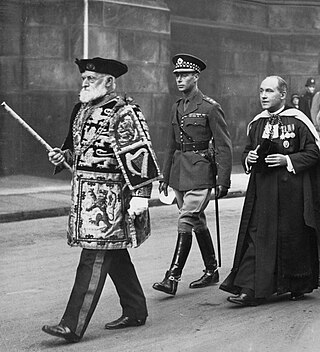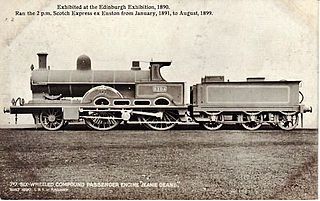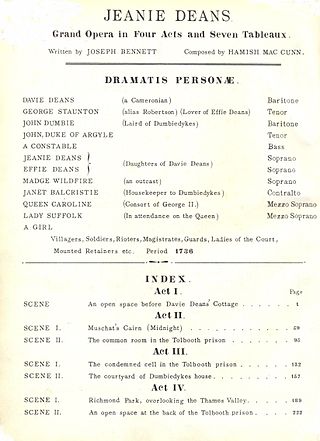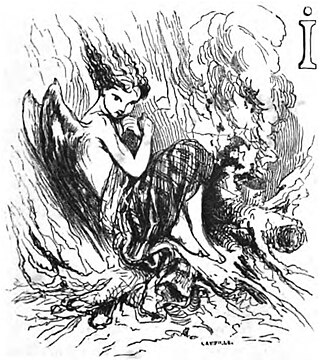
Sir Walter Scott, 1st Baronet, was a Scottish historian, novelist, poet, and playwright. Many of his works remain classics of European and Scottish literature, notably the novels Ivanhoe (1819), Rob Roy (1817), Waverley (1814), Old Mortality (1816), The Heart of Mid-Lothian (1818), and The Bride of Lammermoor (1819), along with the narrative poems Marmion (1808) and The Lady of the Lake (1810). He had a major impact on European and American literature.

Midlothian is a historic county, registration county, lieutenancy area and one of 32 council areas of Scotland used for local government. Midlothian lies in the east-central Lowlands, bordering the City of Edinburgh council area, East Lothian and the Scottish Borders.

Holyrood Park is a royal park in central Edinburgh, Scotland about 1 mile to the east of Edinburgh Castle. It is open to the public. It has an array of hills, lochs, glens, ridges, basalt cliffs, and patches of gorse, providing a wild piece of highland landscape within its 650-acre (260 ha) area. The park is associated with the royal palace of Holyroodhouse and was formerly a 12th-century royal hunting estate. The park was created in 1541 when James V had the ground "circulit about Arthurs Sett, Salisborie and Duddingston craggis" enclosed by a stone wall.

The Heart of Mid-Lothian is the seventh of Sir Walter Scott's Waverley Novels. It was originally published in four volumes on 25 July 1818, under the title of Tales of My Landlord, 2nd series, and the author was given as "Jedediah Cleishbotham, Schoolmaster and Parish-clerk of Gandercleugh". The main action, which takes place between September 1736 and May 1737, is set in motion by the Porteous Riots in Edinburgh and involves an epic journey from Edinburgh to London by a working-class girl to obtain a royal commutation of the death penalty incurred by her sister for the alleged murder of her new-born baby. Despite some negative contemporary reviews, some now consider it Scott's best novel.

Lasswade is a village and civil parish in Midlothian, Scotland, on the River North Esk, nine miles south of Edinburgh city centre, contiguous with Bonnyrigg and between Dalkeith to the east and Loanhead to the west. Melville Castle lies to the north east. The Gaelic form is Leas Bhaid, meaning the "clump at the fort."

Gerda Stevenson is a Scottish actress, director and writer, described by The Scotsman in 1999 as "Scotland's finest actress". She has played many parts in the theatre, including the title role in Edwin Morgan's English translation of Racine's Phèdre, and Lady Macbeth, and has appeared in many television dramas. She was Murron MacClannough's mother in the Mel Gibson film Braveheart, and her voice is familiar to listeners of British radio, as a reader of short stories and adaptations. In particular, she has performed several poems and songs by Robert Burns for the BBC.

Charles Laing Warr KCVO FRSE (1892–1969) was a Church of Scotland minister and author in the 20th century.

PS Jeanie Deans was a Clyde paddle steamer, built in 1931 for the London and North Eastern Railway. She was a popular boat, providing summer cruises from Craigendoran until 1964.

Jeanie Deans was the name given to at least two railway locomotives naming them after the fictional character, Jeanie Deans, who featured in Sir Walter Scott's novel, Heart of Midlothian.

Jeanie Deans is an opera in four acts by Hamish MacCunn (1868–1916) set to a libretto by Joseph Bennett which is loosely based on Walter Scott's 1818 novel, The Heart of Midlothian and is named after its heroine, Jeanie Deans. The opera was commissioned by the Carl Rosa Opera Company and first produced at the Royal Lyceum Theatre in Edinburgh on 15 November 1894 to great acclaim.
Jeanie Deans is a play written by Dion Boucicault based on Sir Walter Scott's 1818 novel, The Heart of Midlothian. It is named after the heroine of the novel, Jeanie Deans.
Rosa 'Jeanie Deans' is a scarlet-crimson hybrid rubiginosa rose cultivar created by Sir James Plaisted Wilde, who became Lord Penzance, in 1869. It is named after Jeanie Deans, the heroine of Scott's novel The Heart of Midlothian.
"Jeanie Deans" is a song which celebrates Jeanie Deans, the heroine of Sir Walter Scott's 1818 novel, The Heart of Midlothian. It was probably performed in music halls around the end of the 19th century as it is found in a 'broadsheet' of that period. Its musical accompaniment is not given.
The poem "Jeanie Deans" was written by Carolina Oliphant (1766–1845). It eulogizes Jeanie Deans, the heroine of Sir Walter Scott's 1818 novel, The Heart of Midlothian. However, it appears to be unfinished as it ends with Jeanie 'wending' her way to London where she later obtains the pardon she seeks from the Queen for her sister and the story does not end there. For the full story see Jeanie Deans.

Thomas Stuart Burnett ARSA was a Scottish sculptor in the 19th century.
The Heart of Midlothian is a 1914 British silent historical film directed by Frank Wilson and starring Flora Morris, Violet Hopson and Alma Taylor. It is an adaptation of Sir Walter Scott's 1818 novel The Heart of Midlothian.
A Woman's Triumph is a lost 1914 silent film drama directed by J. Searle Dawley and starring Laura Sawyer. It was produced by Daniel Frohman and Adolph Zukor and based on an 1818 story The Heart of Midlothian by Sir Walter Scott.
Frances Douglas, Lady Douglas, formerly Lady Frances Scott, was the wife of Archibald Douglas, 1st Baron Douglas, and the mother of novelist Caroline Lucy Scott. Like her brother, Henry Scott, 3rd Duke of Buccleuch, she was closely acquainted with the novelist Walter Scott. She was an amateur artist, some of whose works have survived.
Nicol Muschat (1695–1721) was a Scottish physician, remembered for his murder of his teenage wife, Margaret Hall (1704-1720).

Trilby; or, The Fairy of Argyll is an 1822 literary fairy tale novella by French author Charles Nodier (1780–1844). In it, a Scottish household spirit falls in love with the married woman of the house, who at first has him banished, then misses him, and eventually returns his love, both of them dying at the end. It was a popular work of the Romantic movement, published in multiple editions and translations. It also gave birth to adaptations as multiple ballets, including La Sylphide, and Trilby, and the opera The Mountain Sylph, some of which only retained the basic idea of love between a fairy and a Scottish peasant, but otherwise greatly diverged from the original plot.
















